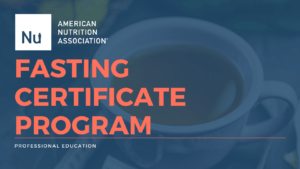What Is A Balanced Diet Anyway?

If my eating habits are half good and half bad, does that make my overall diet balanced?
The short answer is “No!”
So what is a balanced diet then?
For a fast assessment take the Healthy Eating Quiz. If you get a score greater than 38 then you are likely to have a “balanced diet”.
We developed the Healthy Eating Quiz as a brief screening tool to assess dietary quality and provide a quick check as to whether your usual weekly eating habits are healthy. Our research shows that in adults, children and toddlers people who have the highest diet quality scores also have higher intakes of vitamins and minerals important for health.
So aim for more variety within each of the healthy or “core” food groups, including vegetables, fruits, whole grains, lean sources of animal or vegetarian protein (meat, poultry, seafood, eggs, nuts, legumes) and dairy foods (cheese, milk, yogurt).
Important nutrients found in the five “core” food groups include calcium, iron, zinc, folate, B vitamins, vitamin C, beta-carotene, fiber, and phytonutrients. It makes sense that eating a large variety of core foods each week leaves less room on your plate for unhealthy energy-dense, nutrient-poor foods, called discretionary choices.
Our study in young women found high intakes of vegetables and fruit was associated with healthy skin color and “glow”. While our weight loss study found people who increased their diet quality score the most over three months lost the most weight.
Researchers following 12,000 Australians for over five years found increasing your intake of vegetables and fruit predicted increased happiness, life satisfaction, and well-being. Tap into the power of variety by adding a number of different healthy foods to your weekly grocery shop, especially items from the vegetable and fruit section.

Nutrient reference values
Overall nutritional balance is determined by whether or not you get enough nutrients (macronutrients, dietary fiber, vitamins, minerals) from the foods you usually eat to support appropriate growth (especially in children), meet your body’s needs and prevent development of diseases due to nutrient deficiencies or excess.
These nutrient intake targets are called Nutrient reference values. The amount of each nutrient needed depends on your age, sex, and life stage (whether pregnant or breastfeeding). The nutrient reference value calculator lets you check your daily estimated average requirements, recommended daily intakes and upper levels of nutrients to help prevent chronic disease.
Not everyone meets their nutrient reference value. Not meeting them means you have a higher risk of food-related poor health. Results from the last Australia Health Survey compared usual nutrient intakes from foods with the nutrient reference values. The good news was almost everyone (over 95%) met their needs for protein, vitamin C, vitamin B12, phosphorus, and selenium.
However, most people did not fare well for calcium. About half the males (51%) and three-quarters of females (73%) did not meet calcium requirements. Good sources are dairy products and fortified soy milk. Not getting enough calcium increases the risk of low bone density and fractures.
Most males got enough iron, but 23% of females did not get enough iron from foods such as meat, chicken, fish, or vegetarian alternatives like legumes. This increases the risk of iron deficiency and anemia with symptoms like tiredness and low immunity.
Australian bread making flour is fortified with folic acid (folate) and mostly uses iodized salt. Iodine found in bread, milk, seafood and iodized salt. Iodine is needed by the thyroid gland in the throat to make the hormone thyroxine. If there is not enough it swells, causing goiter. Severe iodine deficiency in a mother can cause a type of mental retardation in the infant called cretinism. Most people met their iodine requirements, but 8% of females didn’t. Among two to three-year-olds 13% of boys and 6% of girls actually exceeded the upper limit, so take care with their foods and drinks.
Folate is needed to prevent neural tube birth defects such as spina bifida. Of concern is that about 9% of adult females did not get enough folate from foods,including green leafy vegetables, fruit, and legumes.
People had high sodium or salt intake from food. Over 76% of males and 42% of females exceeded the upper level of intake, even before salt added at the table or during cooking was considered.

Not eating enough foods high in fiber increases your chance of becoming constipated.
Alexander Ekman/flickrWhen your usual dietary intake is not balanced you develop signs and symptoms of poor health. For example, not getting enough whole grains and hence fiber makes you more likely to become constipated.
A “balanced diet” means the foods you usually eat provide all the nutrients your body needs to lower your risk of developing nutrient deficiencies and optimize your health long-term. Choose a variety of foods from each of the Australian Guide to Healthy Eating core food groups.
You can get personalized help to improve your eating patterns by consulting an Accredited Practising Dietitian. Or use our comprehensive dietary assessment tool, the Australian Eating Survey to get a personal comparison with nutrient reference values.
Sources:
Author:






